note: This interview was originally published in my old blog, Photo Artist Textures
I’ve followed Mandy Disher’s gorgeous photography on Red Bubble since 2009. I’ve been delighted, inspired (and I’m sure influenced) by her. Her images are crafted with a delicate but sure hand. Her texture use is masterfully integrated to support her vision. I’m pleased to inaugurate our photographer interview series with her work. I’ve included some examples of her use of textures in her florals and still lifes. I couldn’t resist adding one of her wonderful portraits of her dogs. I’ve also chosen a few of her stunning floral macros.
Mandy is a photographer living in Ramsey, Cambridgeshire (England). In April of 2010 she was awarded Winner of the Plant Portrait category of The International Garden Photographer of the Year 2010. Her work has appeared in Digital Camera Magazine and Digital SLR Photography. She has also written an article about texturing images for Digital Camera Magazine
Photo Artist Textures+
Hi Mandy, can you tell us a little about yourself?
Mandy
I’ve been married to my lovely husband Gary now for 35 years. He puts up with my obsession for photography. I have a wonderful daughter and son who are both married and have families of their own now, but I get to see them often as they aren’t too far away which is lovely.
I work part time at Ramsey Abbey College, as a Food and textile technician, enjoyable and rewarding work helping students with their GCSE studies.
Two dogs and a very old cat share our home with us. The clever and very cute Alfie the Jack Russell and beautiful Annie the Whippet are kept in check by Chev the bossy feline.
Photo Artist Textures+
How long have you been photographing and what drew you to photography? Did you go to school for photography or are you self taught?
Mandy
I’ve always had an interest in photography and like many others my interest became a passion when Digital arrived. This new and exciting technology opened up a whole new meaning to my photography by allowing me to indulge in it to my hearts content.
Being self taught, I’ve steadily come to grips with Adobe Photoshop to process my work by reading on-line tutorials and magazine features and gleaning information where ever possible. Still so much to learn though, I’m on a continual learning journey.
Photo Artist Textures+
What artists have inspired you?
Mandy
There are so many talented photographers whom I really admire and draw inspiration from, take a look at my favorites [in RedBubble], they give a good indication of people whose work I love and whose work inspires me so much.
Photo Artist Textures+
What else inspires you or moves you?
Mandy
Nature inspires me hugely, each changing season offers wonderful photographic opportunities but if flowers didn’t exist I’d probably like to photograph people and animals.
Photo Artist Textures+
What makes you want to grab your camera?
Mandy
A frosty morning with hoar on the leaves, dewy cobwebs, the sun coming out after a summer shower, the first snowdrops of spring, ferns unfurling their leaves, ladybirds on daisies and butterflies on sedums.
Photo Artist Textures+
Do you tend to shoot with natural light or strobes or a combination? Is there a certain kind of light you like most? Do you shoot with post-processing in mind? In other words, do you shoot any differently if you know you will use textures, etc.?
Mandy
An overcast day is perfect for taking flower photos, no harsh shadow problems, but sometimes a bright and sunny day is great if you want to create some lovely bright and colourful backgrounds. I try to avoid harsh sunlight directly onto my subject but find that having my flower in a nice diffused light and shoot against a bright lit backdrop gives beautiful results. Shooting in this situation would make the subject too dark so I over expose the shot in camera by at least a stop to bring in detail that would be lost.
If I’m taking a still life, and have in my mind to use textures in the processing I would use a plain neutral background for the shot, I find this background is usually best for adding texture to.
I don’t own any studio lighting so I rely on natural light where ever possible. I do have a couple of A4 light boxes which help in the winter time when light is short and a desk lamp comes in useful.
Photo Artist Textures+
What equipment do you have in your Camera Bag?
Mandy
Canon 450d (Digital Rebel) (note: Mandy now uses a Canon 7D)
Canon EF-S 18-55mm f/3.5-5.6 IS SLR Lens
Canon EF 70-300mm f/4-5.6 IS USM Lens for Canon EOS SLR Cameras
Sigma 105mm f/2.8 EX DG Medium Telephoto Macro Lens for Canon SLR Cameras
Tamron AF 90mm f/2.8 Di SP A/M 1:1 Macro Lens for Canon Digital SLR Cameras
Tamron AF 60mm f/2.0 SP DI II LD IF 1:1 Macro Lens for Canon Digital SLR Cameras
Canon PowerShot G9
Manfrotto 190XPROB 3 Section Aluminum Pro Tripod
Manfrotto 496RC2 Ball Head
Photo Artist Textures+
What Photo Editing software do you use?
Mandy
Adobe Photoshop Lightroom 2
Adobe Photoshop CS4
Photomatix Pro
Photo Artist Textures+
Do you regularly use any 3rd Party filters & plug-ins? If so, what are you favorites?
Mandy
I don’t have any 3rd party plug-ins at the moment.
Photo Artist Textures+
Do you create your own textures?
Mandy
Yes, I try to, taking photos of anything that I think could work, but also find there are some great places on the net.
Photo Artist Textures+
Mandy, most of your photographs are floral, plant & insects. Are you also an avid gardener? Do you photograph mostly from you own garden or other gardens? Did plant appreciation draw you to photography or vice versa?
Mandy
I’ve always loved flowers and plants long before I owned a camera.
We moved home some 25 years ago and the garden that came with the house was just laid to lawn. Having this large blank canvas to work with, I soon began planting trees, shrubs and flowers. All these years later the garden is now well established and there’s little room for more plants but it’s hard to resist them, and find there’s always room for just one more. I enjoy my garden immensely and love pottering about in it.
Macro photography interested me very much and flowers seemed the ideal for close up photography, capturing the tiny delicate and intricate structures, I found the perfect symmetry of patterns and shapes wonderful and fascinating, from then on I was hooked.
Photo Artist Textures+
I love the play between soft ethereal tones and crisp detail and lighting in your work. Do you consciously strive for that?
Mandy
I try not to over texture my images as I like to see clarity in the flower but also I tend to make them soft so not to compete with the subject, I try to aim for harmony and balance of texture and flowers. Lighting is so important too, I am continually trying to achieve that special light that adds atmosphere and gives life to a shot.
Photo Artist Textures+
The focus in your macros is so incredible, the play of very sharp against blurred, soft, pastel areas. Is that all in camera or is there any post-processing?
Mandy
Mainly in camera, using a large aperture to get a shallow depth of field, it’s rare for me to use a filter blur on the original image, on textures yes, all the time. I always sharpen as I always shoot in raw, usually the high pass filter with the blend mode set to overlay and the layer hidden, I then target areas that I need to sharpen.
Photo Artist Textures+
What I love about your work that uses textures is that you’ve made them your own — you aren’t just slapping a texture onto an image. They are delicately crafted to work in your image. A lot of your texture work looks like you manipulate the textures to get the effect you want. Can you describe your process?
Mandy
Every photo is different; a same set of textures will look completely different from one image to another. With practice though you get a feel for what might work on an image. With a texture chosen I’ll probably make adjustments to it when I import it by altering the size or distort it, I’d sometimes add a Gaussian blur to make it more subtle and add even more blur to it if all I want is the colour tones from it so I’m removing the texture from it almost entirely. Or change the colour or saturation of it to suit my image. There are many ways to modify a texture, any of the adjustment tools or filters can be used on them just like any image. Adding several texture layers or duplicating ones already in use and using the different blending modes and opacities to alter how they will appear.
As all the textures are as layers it’s easy to switch them around in the layer palette order or play around with the blend modes of each until you get the effect you want. I always use layer masks too as they allow control over what you want to hide or reveal within the texture.
Photo Artist Textures+
There is such a crisp delicateness in your images. They look almost like paintings. I’m thinking in particular of Anemone Charm. Would you share how that was made?
Mandy
Anemone Charm was taken a while back and I didn’t save the psd file, so from memory this is a little of how I made the image. Taken in natural light from the window, I made a backdrop with some voile fabric and pinned it to a cork board allowing it to flow over the table top before placing the vase on it. I only used one or two subtle textures over this image, I felt the voile worked well without adding much more. To add more contrast I added a 50% soft light layer and painted black at a low opacity of 5 up to 10 to darken shadow areas and painted white to lighten highlights. I prefer this method of adding contrast to an image as it is deemed less destructive than the dodge and burn tool. I also duplicated the background layer and set the blending mode to soft light and then reduced the opacity of it, I find this can brighten a flat image up and give it a little more punch. I used a colour layer and painted colour into the voile and some of the Anemonies and vase and finally sharpened the image.
Photo Artist Textures+
What tips would you give someone beginning to use textures?
Mandy
Using textures in the beginning can be very much trial and error, as they can look very different once applied. They appear differently on the tonal ranges of the image depending on which blending mode is used, the multiply, overlay and soft light blend modes are the ones that I use most often.
If you are choosing florals as your subject it’s best to choose large broad petals which make for easier masking, lots of small or spikey flowers would take much longer to mask. Use a plain background, textures work better on this. There are many on-line resources where you can download free textures, experiment with different ones and you’ll soon have many favorites to work with.
Photo Artist Textures+
Any advice to new artists for finding their own vision?
Mandy
Just do what makes you happy, don’t take it too seriously, I think if you allow it to become hard work, the fun and enjoyment goes out of it. As you continue to learn, all sorts of nice surprises come out of your camera, try to remember what was involved to make that happen and learn from it, the same can be said when an awful shot shows up, learn from mistakes too, I do all the time.
All images copyright Mandy Disher.
See More of Mandy’s Work
Mandy’s Website and on RedBubble, Flickr.
American Photographer and Designer living in France with my French husband, 2 Weimaraners and Cat Rescues. Camera, Mac, studio, garden.



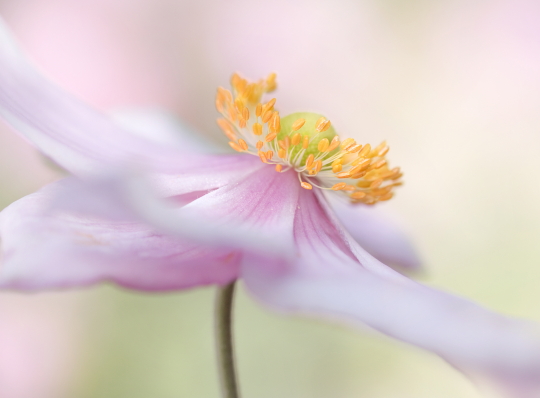

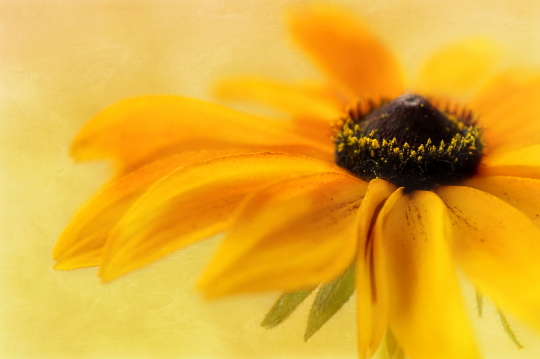
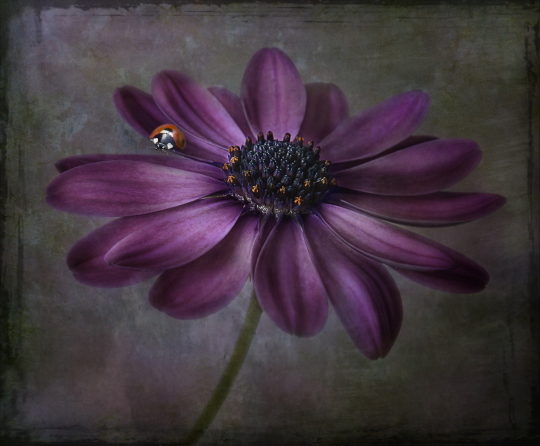

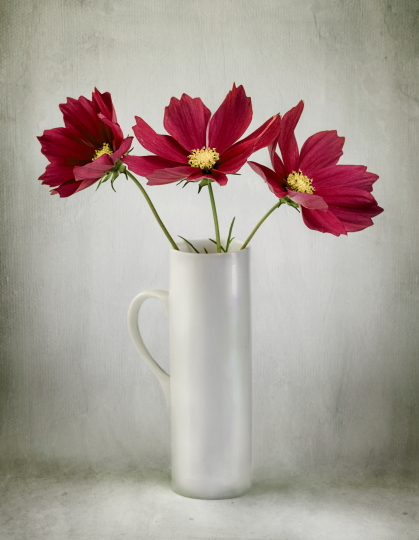


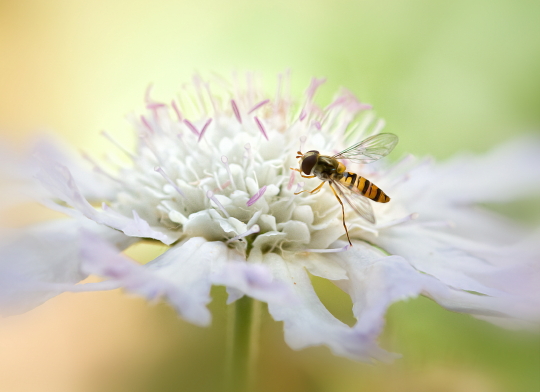
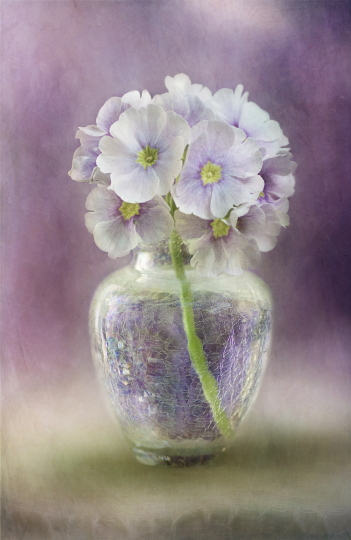
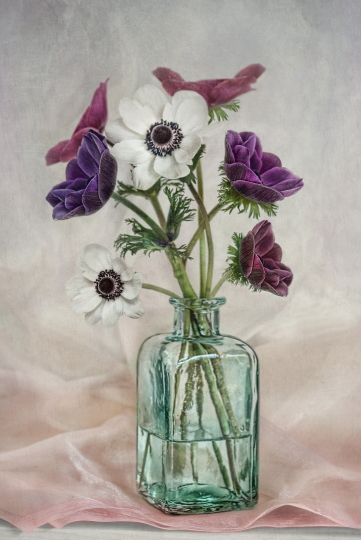

Mandy’s images look like paintings! Like you, she’s very inspirational!
Superb interview. Thanks, ladies